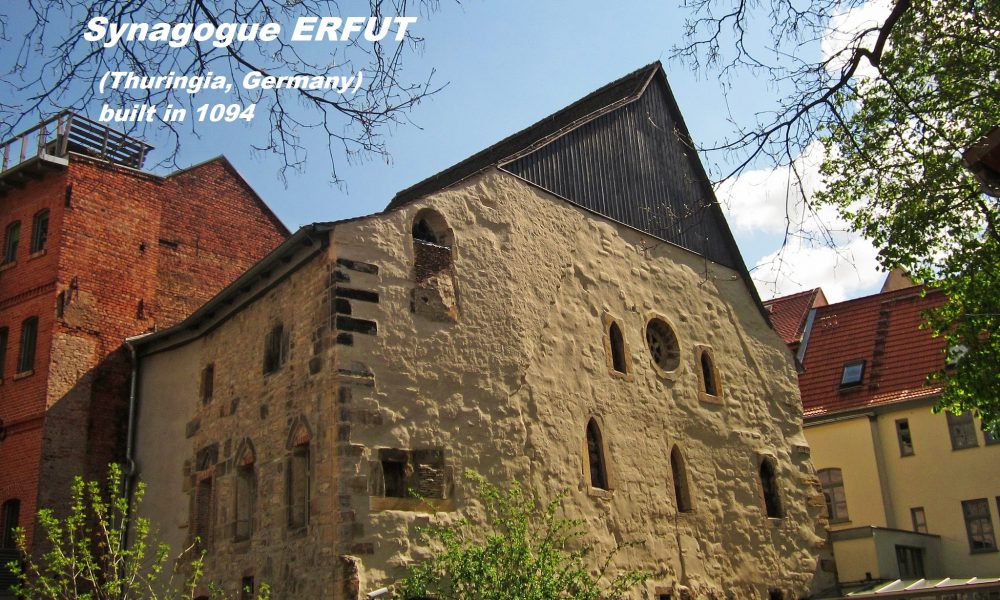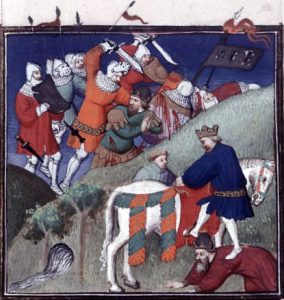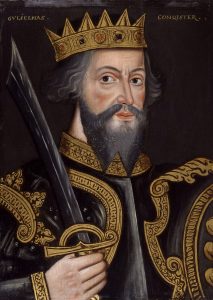
1070 AD to 1090 AD, Psalm 101: The time of the synagogues.
This site was first built in French (see www.147thgeneration.net). The English translation was mainly done using « google translation ». We have tried to correct the result of this translation to avoid interpretation errors. However, it is likely that there are unsatisfactory translations, do not hesitate to communicate them to us for correction.
(for that click on this paragraph)
Summary
This generation of the 1870s and 1880s.
According to our count, this generation is the 140th generation associated with Psalm 140. It is in this Psalm 140 that we therefore find an illustration of the facts of this generation.
In Spain, the slow Christian reconquest continues taking advantage of the rivalry of taifas, the kingdoms resulting from the implosion of the caliphate of Cordoba in 1031. The Seljuks, A new force from Central Asia emerges in the Middle East and seizes Baghdad in 1055. The Byzantine empire, threatened by the new force, among others, folds back on itself thus facilitating the emergence of Europe is ready to dominate the world. William the Conqueror, who became Duke of Normandy at the age of eight in 1035, seized the English crown in 1066, marking the birth of England.
In this new, pregnant Europe, waiting for its painful delivery to the next generation, the Jews are going through a period of intellectual expansion. In Spain, under the shadow of the cross as under the domination of the crescent, Muslim princes and Christian kings do not hesitate to entrust responsibilities and powers to the Jews. They could indulge themselves freely in the culture of science and poetry. After the deaths of Samuel ibn Nagrela and Ibn Gabirol, poetry, exegesis, linguistics and philosophy, while having zealous partisans, gave way to the study of the Talmud.
This resurgence of the Talmud also corresponds to the second part of the life of Rashi who settled in Troyes in 1067 and founded a Talmudic school in 1070 that attracts many students from all over Europe. This emergence of a new Judaism based on the study is parallel to a profound change in Jewish society in Europe.
From the end of the 10th century, the Jews abandoned their farms. At the same time, their migration to the city can be observed. Previously the Jews, many of whom were rural, did not necessarily share the same neighborhoods and were often settled among non-Jewish populations.
In many ways, the eleventh century is central to the history of the Jews. It is also economically.
It is not surprising to see the Jews now flocking to the cities prefer to trade. Rudiger, bishop of Speyer (died in 1090), attracts them to his city which he wants to ensure the extension and growth by granting them, in 1084, a privileged status. Status inspired by the letters of protection of Louis the Pious. But while these letters of protection were given to isolated Jewish merchants, the current status concerns a whole Jewish community where merchants will now be the majority.
The installation of Jews in the cities is accompanied by the emergence of places of worship, defying the attempts of prohibition on the part of the Church since many centuries. It was the time of synagogues, and many were built around this time.
The gathering of Jews in cities emerging in the East, and a certain peaceful cohabitation with ecclesiastical authorities, facilitate the theological discussions between Jews and Christians. Discussions seem relaxed. What then seems to be an intellectual game to the Jews will become a formidable weapon that Christians will use against the Jews in future generations.
In 1071, Jerusalem is taken by the Seljuks who massacre its population (a large Arab majority) and then make impossible Christian pilgrimages to the Holy Land. While the Jews seem to be able to settle quietly in the new agglomerations of Europe, the Seljuk invasion is heralding the coming disaster.
Muslims attacking Christianity a second time in Jerusalem during this century give birth to a real religious war between Christians and Muslims, whereas since the Arab conquest, the struggle between the two camps was mainly political. Jerusalem is now the main issue. For many generations Jerusalem will change hands constantly, the Jews often paying the price for each of her conquests.
Talk
Europe
In Spain, the slow Christian reconquest continues taking advantage of the rivalry of taifas, the kingdoms resulting from the implosion of the caliphate of Cordoba in 1031. The Byzantine empire undergoes on its side, the thrust of Turkish forces recently Islamized.
During the second guard of the night, Islam and Christianity developed and fought each other but always against a background of territorial or political rivalry. Jews in the midst of these two forces suffered collateral damage to these conflicts, but in the absence of any real religious conflict.
The third guard of the night, which began two generations ago and coincides with the fall of Cordova, the starting signal of the Christian reconquest in Spain, changes the nature of the fighting between the Muslim world and the Christian world. The political struggle is transformed into ideological and religious combat, Crusades on the Christian side, jihad on the Muslim side. The Jews caught between these two worlds are the main victims.
In Spain, the signs of reconquest are becoming clearer. At the same time, on the religious level, the reconquest is coupled with a radical change in Spanish Christianity as a prelude to the tilting of Spain from the Muslim East to the Christian West. Without impact for the period (generation) which concerns us for the Jews living on Christian soil.

The Seljuks, A new force from Central Asia emerges in the Middle East and seizes Baghdad in 1055. The Byzantine empire, threatened by the new force, among others, folds back on itself thus facilitating the emergence of Europe is ready to dominate the world. The weakening of Byzantium will again benefit the expansion of the Republic of Venice.

At the same time, William the Conqueror, who became Duke of Normandy at the age of eight in 1035, seized the English crown in 1066, marking the birth of England, adding to the expansion of Europe at the beginning of the third watch of the night. He will [1] echo the requests of Pope Gregory VIII for limiting the power of the Jews (this request was aimed mainly at Christian Spain, but without success), by forbidding the Jews to possess Christian serfs and to hire Christian nurses.
Intellectual expansion in Judaism
In this new, pregnant Europe, waiting for its painful delivery to the next generation, the Jews are going through a period of intellectual expansion.
In Spain, the bloody episode of Granada did not really question the cohabitation in Spain:
- Troubled [2] for a moment in their safety by the disorders of Granada, the Jews of Spain quickly recovered from this alarm. This persecution was, moreover, an isolated fact. The kings and emirs of other parts of Spain continued to call skilful and intelligent Jews to their court, to entrust them with the direction of affairs, and to leave to the Jewish population the same rights as to their other subjects. Like Muslim princes, Christian kings also appointed Jews to public office and used their intelligence, activity, and dedication. The Jews, therefore, lost nothing of their influence at the beginning because of the progressive weakening of the Moslem States and the increasing preponderance of the Christian element. In the shadow of the cross as under the domination of the crescent, they could freely engage in the culture of science and poetry. It should be noted, however, that after the death of Samuel ibn Nagrela and Ibn Gabirol, poetry, exegesis, linguistics and philosophy, while having zealous followers, had to give way to study. of the Talmud. It is above all the dialectical part of the Talmud that was once again honored and re-cultured in Spain, Africa and France.
Jews, more urban
This resurgence of the Talmud also corresponds to the second part of the life of Rashi who settled in Troyes in 1067 and founded a Talmudic school in 1070 that attracts many students from all over Europe. This emergence of a new Judaism based on the study is parallel to a profound change in Jewish society in Europe. Previously Jews, many of whom were rural, did not necessarily share the same neighborhoods and were often settled among non-Jewish populations. Urban modeling in Europe started in the 11th century also concerns Jews:

- On many points [3], the eleventh century is crucial in the history of the Jews. It is also economically. From the end of the 10th century, we can observe the abandonment by the Jews of their farms. The acts which up to that time had shown us the Jews who bought the land, now show us the sellers. At the same time their migration to the city is observed. It is not surprising to see the Jews now flocking to the cities prefer to trade. Rudiger, bishop of Speyer (died in 1090), attracts them to his city which he wants to ensure the extension and growth by granting them, in 1084, a privileged status. Status inspired by the letters of protection of Louis the Pious. But while these letters of protection were given to isolated Jewish merchants, the current status concerns a whole Jewish community where merchants will now be the majority.
- Few years later, Henry IV granted a privilege to the Jews of Speyer where the inspiration of the model of the letters of protection of Louis the Pious as commercial activity of the Jews of this city will be even more marked. Around the same time, he gives the Jews of Worms a status that is roughly the same.
New synagogues
The installation of Jews in the cities is accompanied by the emergence of places of worship, defying the attempts of prohibition on the part of the Church since many centuries:

- Following [4] the Germanic expansion towards the East, the Jews established themselves in a particularly appreciable number in the cities of commerce. They certainly did not give up everywhere to place a place of prayers. But, perhaps, have they bypassed the law by replacing the showy synagogue with the modest prayer room, the « schola », « Schul »? One or the other serves different needs, both are in the Jewish community. In Regensburg, where the presence of the Jews is attested for the first time in 981 only, there are already around 1035-1037 several synagogues and « scholae ». The situation must have been much the same in the flourishing Jews of Speyer and Worms.
At the beginning of the third watch of the night, Jews gather in structured communities. This generation marked by great Jewish intellectuals such as Rashi, both in Spain and in Christian Europe, is marked by a new phase of Jewish study that will permeate future generations. This is materialized by the creation of synagogues and places of prayer. In these prayer houses, Judaism can strengthen itself and withstand the storms that will shake Europe.
It is this evolution of the Jewish faith that the beginning of this generation’s psalm summarizes:

- Of David, a song. I shall sing of kindness and judgment; to You, O Lord, I shall sing.
- I shall concern myself with the way of integrity. When will it come to me? I shall walk with the innocence of my heart within my house.
The gathering of Jews in cities emerging in the East, and a certain peaceful cohabitation with ecclesiastical authorities, facilitate the theological discussions between Jews and Christians. Discussions seem relaxed. What then seems to be an intellectual game to the Jews will become a formidable weapon that Christians will use against the Jews in future generations. If it is likely that the arguments developed by the Christians during these oratorical contests are far from being able to convince the Jews, the posteriori reports of these are obviously more in favor of the Christians and will serve the ideological fight of those to the Jews:
- Was religious discussion [5] a means of mission? If we judge from the results obtained, they were very little, if we judge from the intention of the contradictors, Christian opponents especially, they had to be. […] It is in the hope of winning them by this means to the Catholic faith, that Christians begin discussions with Jews, discussions that are born everywhere, « in public places, in private homes » […] When, in 1010, Audouin, bishop of Limoges, wanted to convert the Jews of his city, he believed that Catholic doctors, by engaging in discussions with the Jews, could thus bring them to belief. And again around 1068-1072, Pierre Damien believes in the usefulness of these discussions. According to the desire of his correspondent Honestus, he composes a kind of manual, to serve the Christians in this kind of meetings. But they must not go there, he recommends, to look for vain glory, but only if there is hope of provoking a movement towards conversion in the soul of the adversary. Gilbert Crispin, towards the end of the eleventh century, seems animated by such a hope. […] When Gilbert Crispin lays on the parchment the vicissitudes of his religious discussions, he thinks that his report may be useful to others. […] The others to whom, later on, this report could be useful, are undoubtedly the Christian opponents in future discussions with Jews. The arguments made by Gilbert Crispin can serve them.
The text written by Gilbert Crispin as all those who recount such verbal contests between Jews and Christians are the subject of successive versions in time to make evident the victory of the Christian debater against the Jew.
It is this new weapon that the sequel of the psalm of this generation fights:

- I do not place before my eyes any base thing; I hate doing wayward deeds; it does not cling to me.
- A perverse heart turns away from me; I know no evil.
- He who slanders his neighbor in secret, I cut him down; one whose eyes are raised up high and his heart is expansive, I cannot tolerate him.
In 1071, Jerusalem is taken by the Seljuks who massacre its population (a large Arab majority) and then make impossible Christian pilgrimages to the Holy Land. While the Jews seem to be able to settle quietly in the new agglomerations of Europe, the Seljuk invasion is heralding the coming disaster.
Muslims attacking Christianity a second time in Jerusalem during this century give birth to a real religious war between Christians and Muslims, whereas since the Arab conquest, the struggle between the two camps was mainly political. Jerusalem is now the main issue. For many generations Jerusalem will change hands constantly, the Jews often paying the price for each of her conquests.
But none of these conquerors will be able to preserve this city this one having to become again at the end of this third guard of the night the capital of the land promised to the Jews. It is morning (dawn) that will mark these times.
This is the meaning of the end of the psalm of this generation:

- My eyes are upon the faithful of the land to dwell with me; he who goes on the way of the innocent, he will serve me.
- He will not dwell within my house; he who practices deceit, who speaks lies, will not be established before my eyes.
- Betimes I cut down all the wicked of the earth; to cut down from the city of the Lord all workers of violence.

[1] According to Henri Graetz: « HISTORY OF THE JEWS / THIRD PERIOD – DISPERSION ». Second epoch – Science and Jewish poetry at their peak. Chapter III – The Five Isaacs and Yitshaki – (1070-1096). (French: « HISTOIRE DES JUIFS / TROISIÈME PÉRIODE — LA DISPERSION ». Deuxième époque — La science et la poésie juive à leur apogée. Chapitre III — Les cinq Isaac et Yitshaki — (1070-1096) ).
[2] According to Henri Graetz: « HISTORY OF THE JEWS / THIRD PERIOD – DISPERSION ». Second epoch – Science and Jewish poetry at their peak. Chapter III – The Five Isaacs and Yitshaki – (1070-1096). (French: « HISTOIRE DES JUIFS / TROISIÈME PÉRIODE — LA DISPERSION ». Deuxième époque — La science et la poésie juive à leur apogée. Chapitre III — Les cinq Isaac et Yitshaki — (1070-1096) ).
[3] Bernhard Blumenkranz: « Jews and Christians in the Western World, 430-1096 ». (French: « Juifs et Chrétiens dans le monde occidental, 430-1096 ». (p. 21) ).
[4] Bernhard Blumenkranz: « Jews and Christians in the Western World, 430-1096 ». (French: « Juifs et Chrétiens dans le monde occidental, 430-1096 ». (p. 314) ).
[5] Bernhard Blumenkranz: « Jews and Christians in the Western World, 430-1096 ». Chapter « Missionary Competition ». (French: « Juifs et Chrétiens dans le monde occidental, 430-1096 ». Chapitre « La concurrence missionnaire ». (p. 68-69) ).


